The forest takes on protective functions, shapes the landscape, is a habitat for animals, plants and fungi and forms an efficient filter for water and air. The forest also has a positive influence on the climate, an advantage which has increasingly come into focus in recent years.
From a local perspective, it is temperature compensation and, from a large-scale perspective, it is the storage of carbon. With reforestation today, we generate the CO2 storage of tomorrow. As stated in the project description, in certain areas the bushes have to be cleared first, which leads to a loss of carbon in a first phase. However, this loss will be offset with the subsequent reforestation and additional carbon which will be captured in the medium term.
Here are the figures as we understand them. In a subalpine spruce forest, which is our local forest, we can expect 300 to 360 t of carbon per hectare on the total tree biomass. 50 to 100 years must be expected to achieve this value. If the afforestation was preceded by de-bushing, around 50 t CO2 per hectare must be deducted for the removal of the bushes and in the long term there remains a net storage of 250 to 310 t CO2 per hectare.
To give these figures a reference to everyday life, some examples of CO2 emissions are listed below:



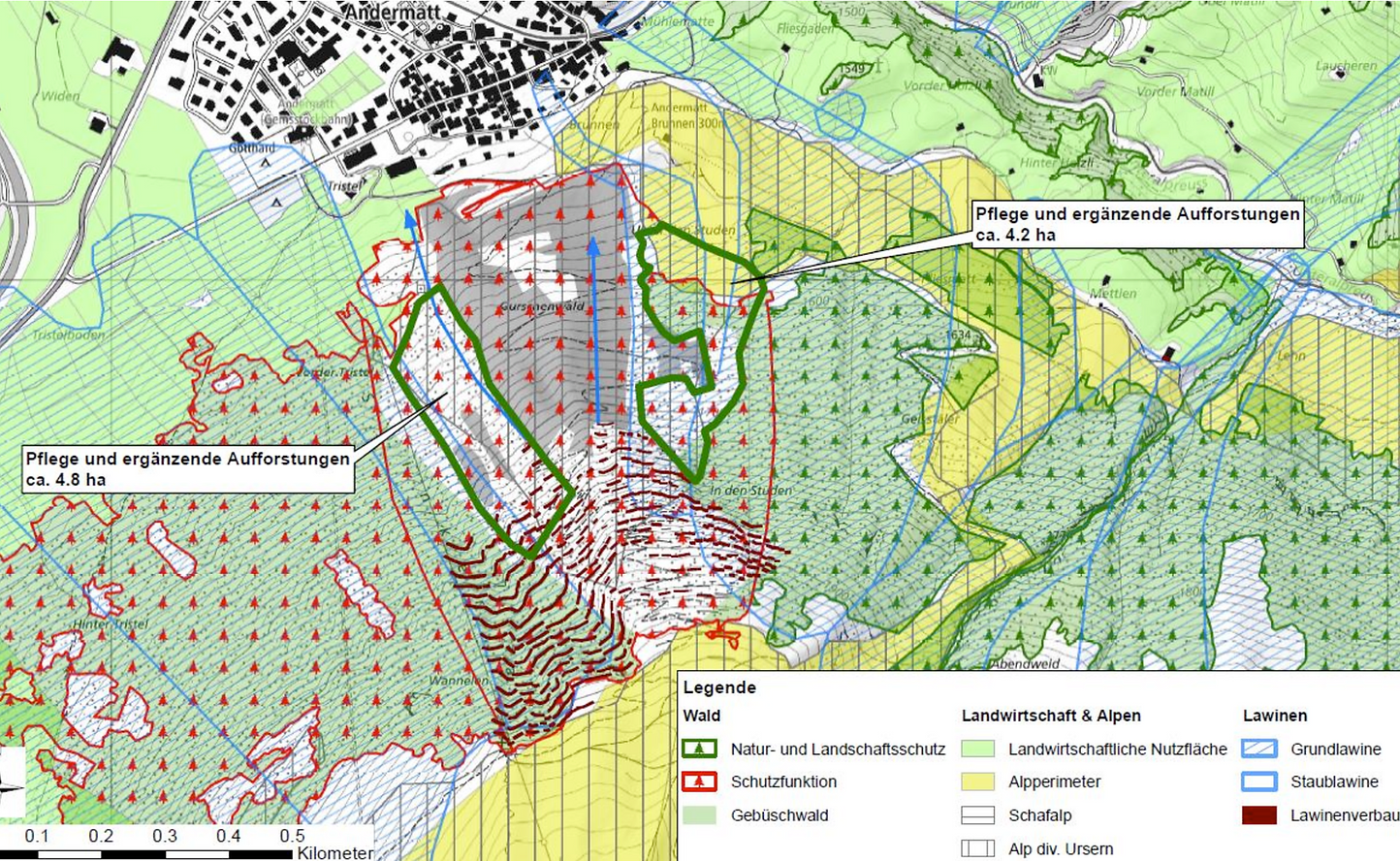
Gurschenwald
Community Andermatt
9 ha
up to 2,790 t CO2
Net storage
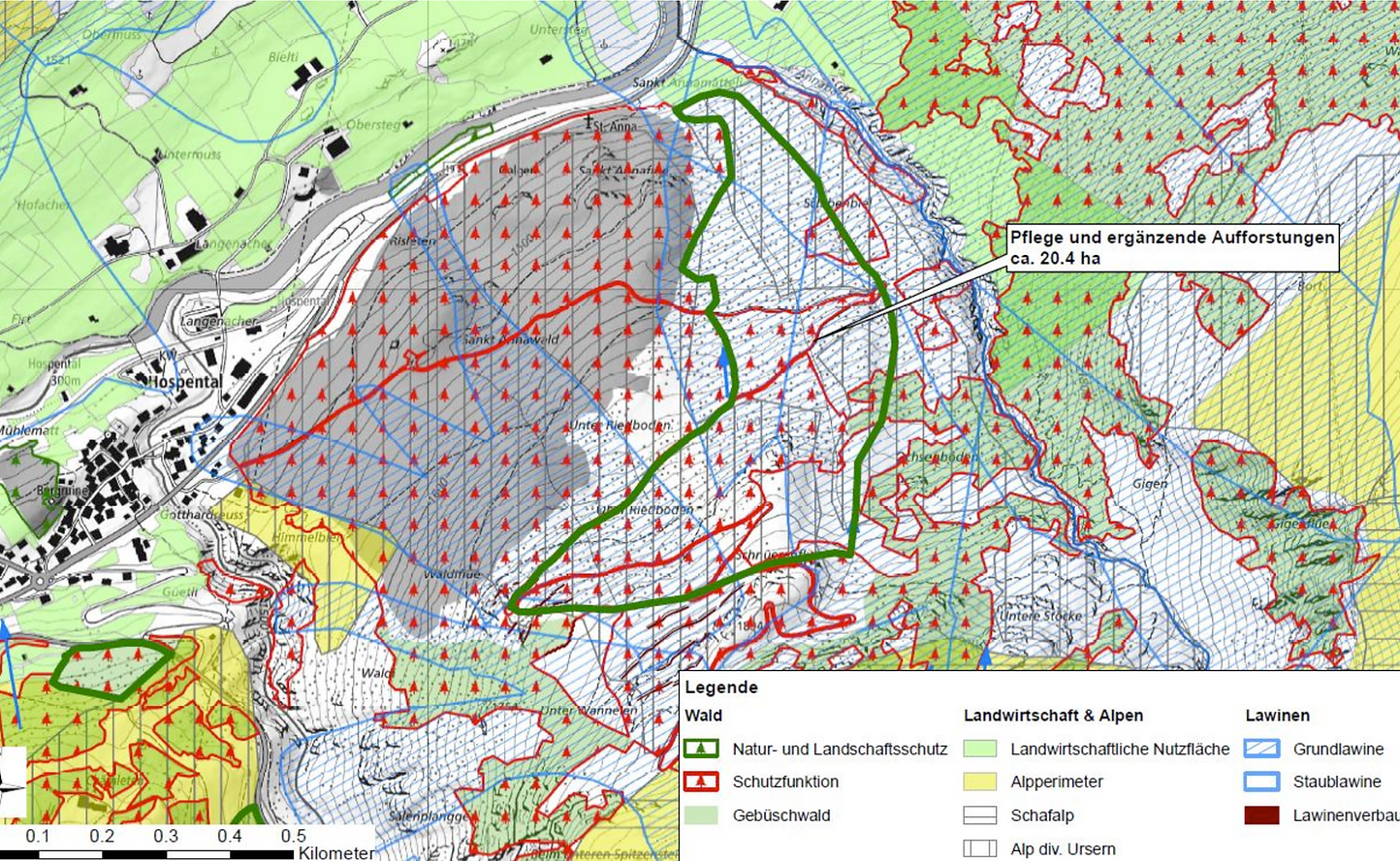
Riedboden
Community Hospental
20.4 ha
up to 6,324 t CO2
Net storage
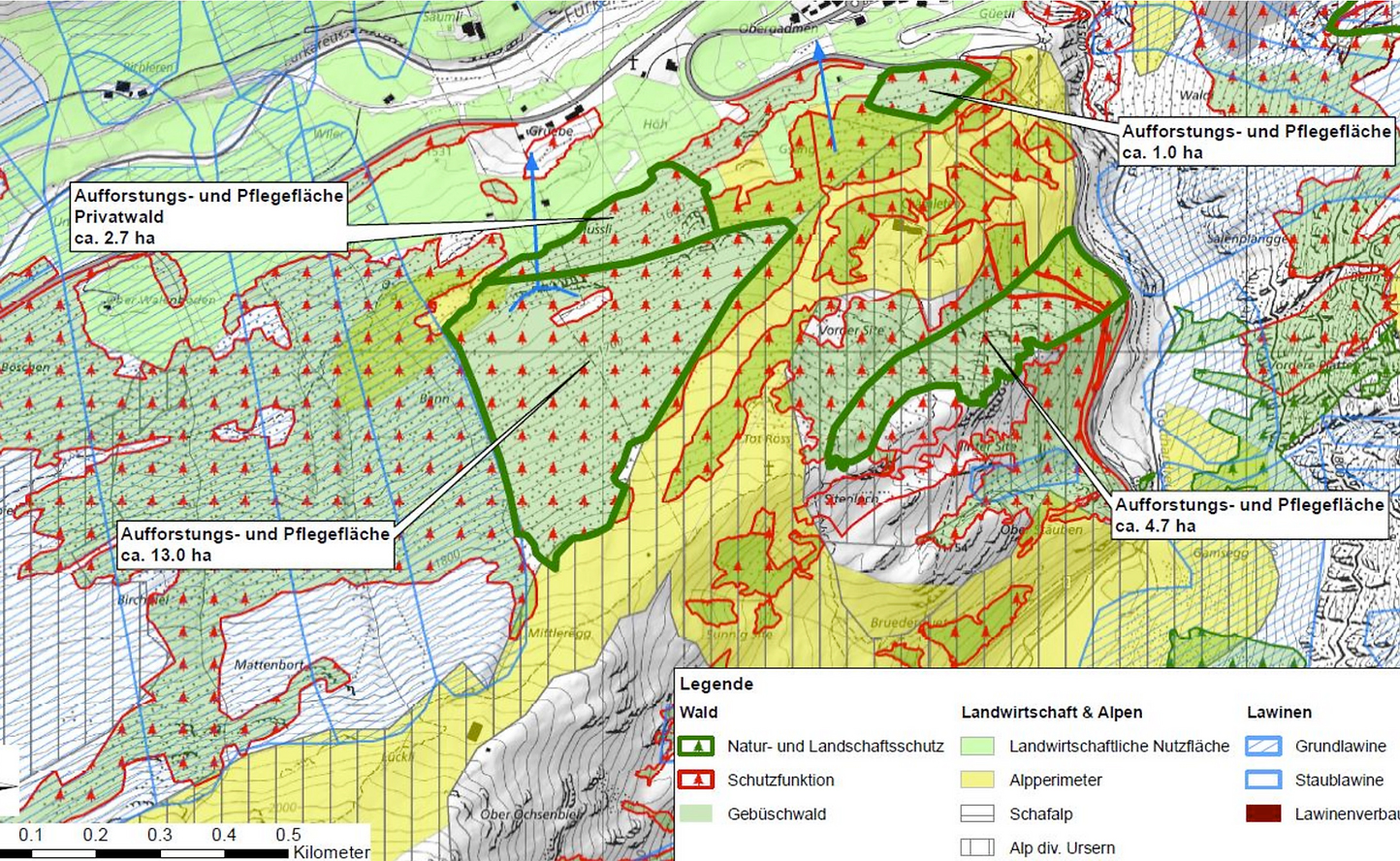
Mussli-Gsang
Community Hospental
21.4 ha
up to 6,634 t CO2
Net storage
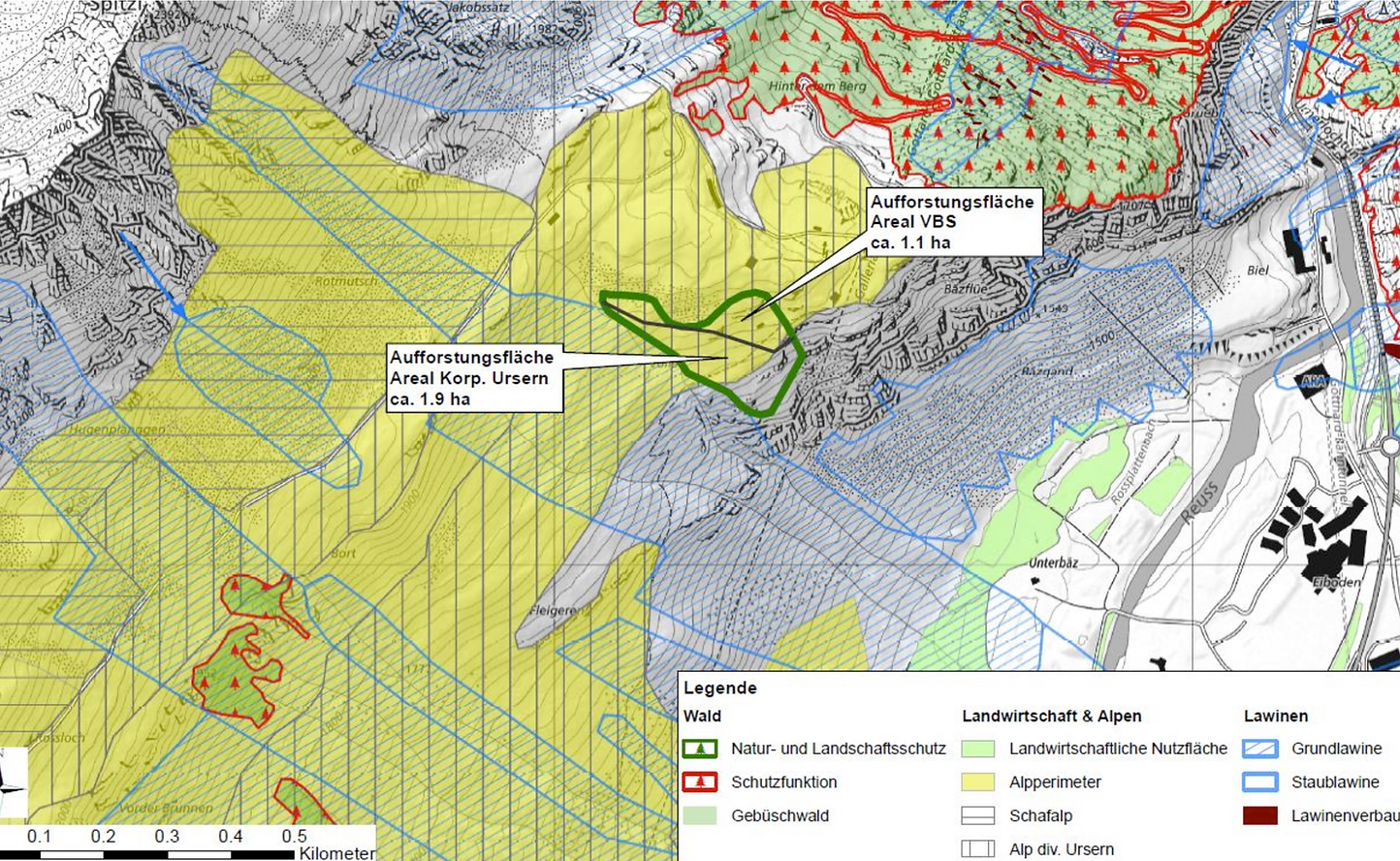
Bäz
Community Andermatt
3 ha
up to 930 t CO2
Net storage
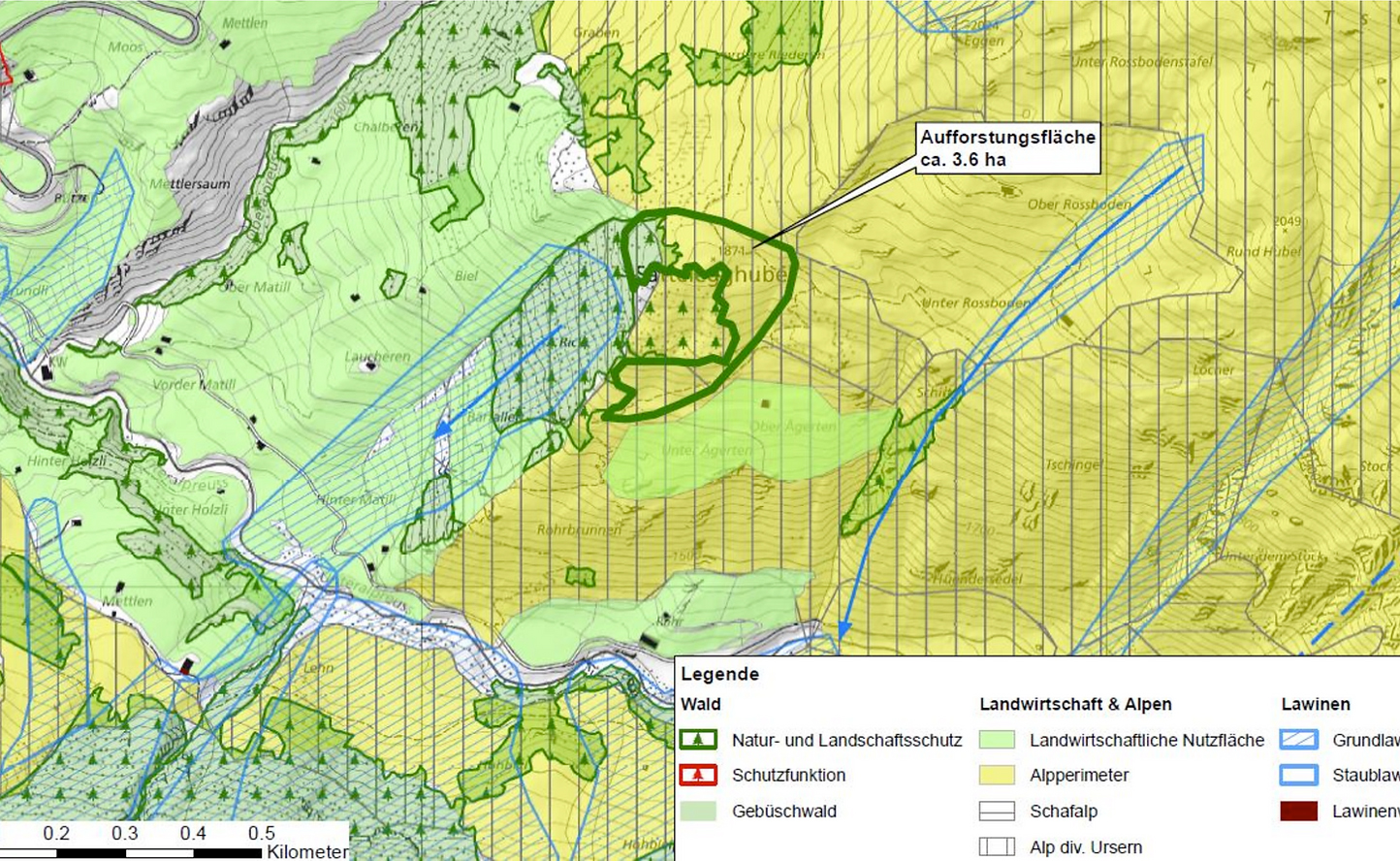
Sattelegg
Community Andermatt
3.6 ha
up to 1,116 t CO2
Net storage
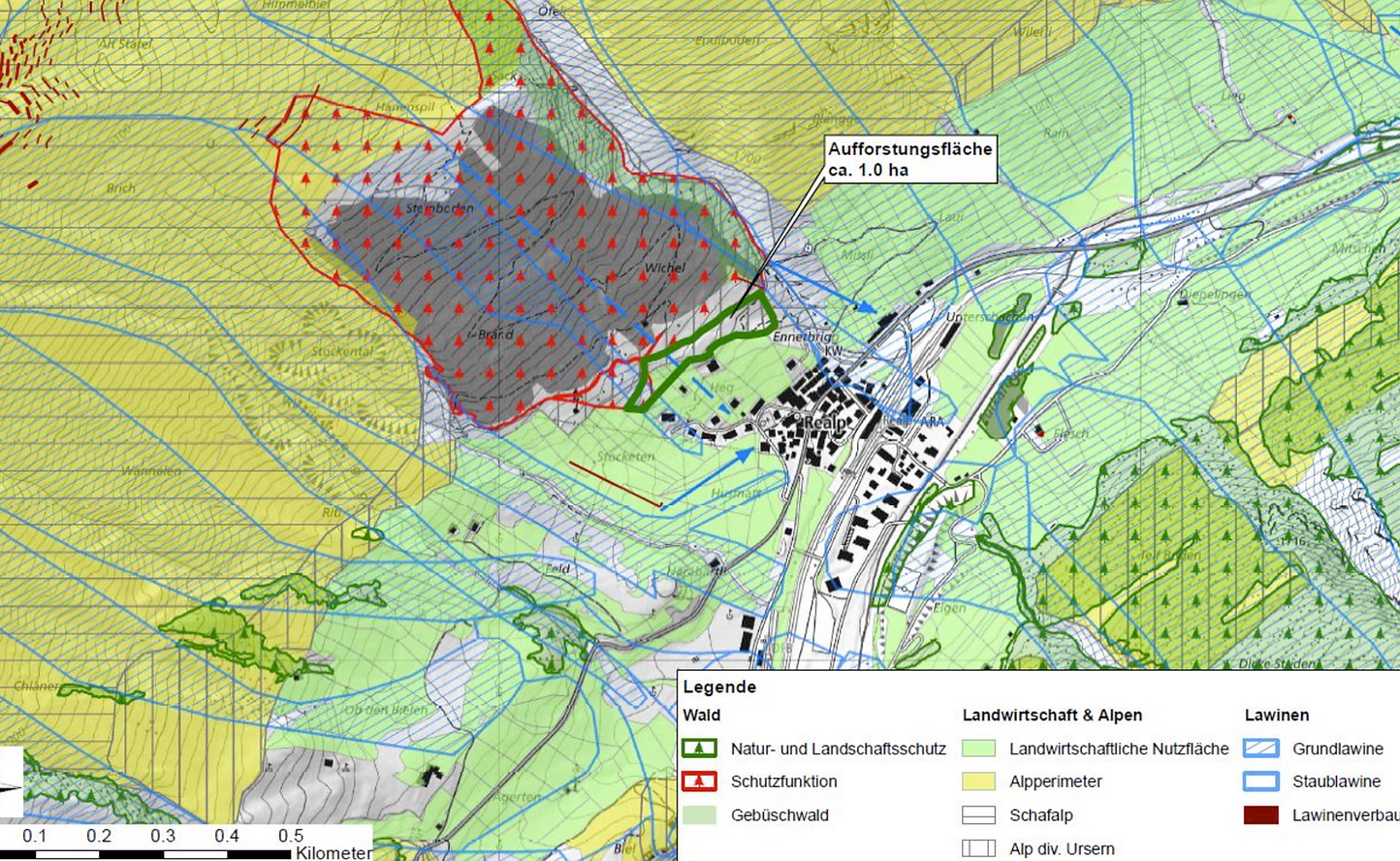
Bannwald Realp
Community Realp
1 ha
up to 310 t CO2
Net storage

